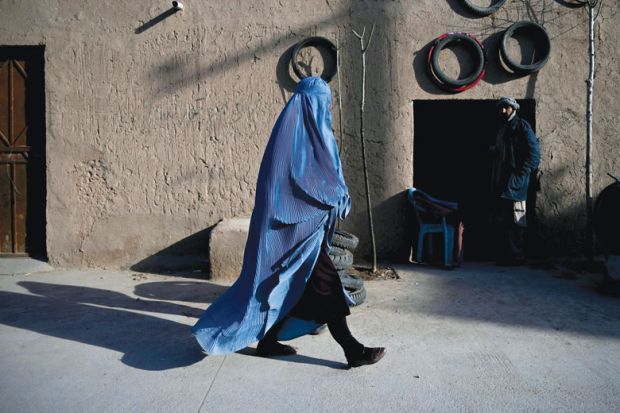For thousands of Afghan students and teachers returning to campuses this month for the first time since the country’s Taliban takeover in August, it is clear that universities are not the same.
Times Higher Education spoke to students and staff from four public universities in Afghanistan. They reported steep declines in student and staff numbers and voiced concerns over the declining quality of education under the Taliban.
“I was surprised to see how much things have changed,” said one Nangarhar University student who arrived back on campus this week.
Universities in warmer provinces of the country, including Jalalabad’s Nangarhar, were directed to open in early February, while those in colder provinces reopen at the end of the month. But already, severely reduced student and staff numbers are apparent. In another stark difference, women are no longer taught with men.
“It’s no longer a co-education, but a separated education,” said the student, who wished to remain anonymous. “We cannot talk to our male classmates and some of my female friends told me that they were told to cover their faces and hair.”
Currently, male students attend classes from 7am to 10.30am, while women come in from 11.30am to 3.30pm, she said. Female teachers have not been allowed to return.
“How can we expect quality education when our professional and experienced teachers no longer teach us?” she asked.
A faculty member at Parwan University, 60km north of Kabul, gave a similar assessment.
“There isn’t any dangerous treatment for us nowadays but the situation is not good – we lost our hopes that we had under the previous government…our goals we wanted to achieve,” he said.
He estimated that roughly 20 per cent of teachers had left the university, either because they had fled the country or could no longer teach. Female staff had not been allowed to return, he said, although they were receiving salaries.
“Just yesterday we received an official letter from the governor of Parwan province saying every employee should come to work six days per week but…female employees should wait for our next order, they can’t come for now.”
He too was deeply concerned about the quality of education slipping.
“In every province there is a state university, in every state organisation, the Taliban replace employees with loyal persons,” he said. “If you have a lazy teacher, you won’t be able to say he’s lazy, because he’s Taliban – if you talk against the Taliban, they will arrest you.”
It is still unclear which university departments will be axed under the new, deeply conservative government. While no departments at Parwan University have been cut, other institutions have not been so lucky. A student at Kabul University said that its politics department had been liquidated.
She gave a bleak prediction for Afghan universities: “I think it will be worse than [in the] past. Maybe our education system [will] break down.”
Abdul Saboor Matin, an assistant professor teaching law at Herat University in western Afghanistan, agreed that morale was low.
“Aside from financial and administrative barriers, lack of motivation and enthusiasm among students and lecturers is the significant problem,” he said.
“The Taliban need to make sure that they will amend their policies and respect professionalism. It will play a significant role in rehabilitation of broken desires and will give much more confidence to students and lecturers.”




